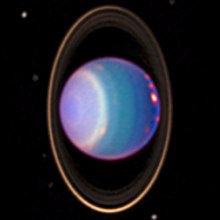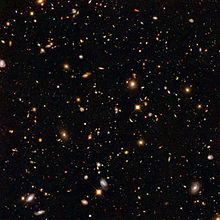The Near Infrared Camera and Multi-Object Spectrometer (NICMOS) is a scientific instrument for infrared astronomy, installed on the Hubble Space Telescope (HST), operating from 1997 to 1999, and from 2002 to 2008. Images produced by NICMOS contain data from the near-infrared part of the light spectrum.
NICMOS was conceived and designed by the NICMOS Instrument Definition Team centered at Steward Observatory, University of Arizona, USA. NICMOS is an imager and multi-object spectrometer built by Ball Aerospace & Technologies Corp. that allows the HST to observe infrared light, with wavelengths between 0.8 and 2.4 micrometers, providing imaging and slitless spectrophotometric capabilities. NICMOS contains three near-infrared detectors in three optical channels providing high (~ 0.1 arcsecond) resolution, coronagraphic and polarimetric imaging, and slitless spectroscopy in 11-, 19-, and 52-arcsecond square fields of view. Each optical channel contains a 256×256 pixel photodiode array of mercury cadmium telluride infrared detectors bonded to a sapphire substrate, read out in four independent 128×128 quadrants.[1]
NICMOS last worked in 2008, [2] and has been largely replaced by the infrared channel of Wide Field Camera 3 after its installation in 2009.[3]
- ^ Skinner, Chris J.; Bergeron, Louis E.; Schultz, Alfred B.; MacKenty, John W.; et al. (1998). Fowler, Albert M (ed.). "On-orbit properties of the NICMOS detectors on HST" (PDF). Proc. SPIE. Infrared Astronomical Instrumentation. 3354: 2–13. Bibcode:1998SPIE.3354....2S. doi:10.1117/12.317208. S2CID 5778753.
- ^ "HST Legacy Instruments". Space Telescope Science Institute. Retrieved January 29, 2023.
- ^ "Hibernating instrument on Hubble roused as engineers ponder message problem". TheRegister.com. Retrieved January 29, 2023.


